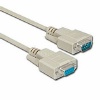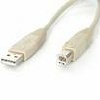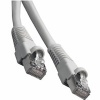|
Introduction Thank you for your decision to purchase a LabeLase® printer from InfoSight. Use this guide as a handy reference to get you up and running quickly. It will take you step by step through software and driver installation and configuration and help you verify that everything is working. Note that this document covers the Installation of LabeLase® Producer and communications drivers for the following InfoSight printers:
|
||||||||||||
|
As you proceed with the installation process, you will be instructed to connect your printer to your PC, or to your local area network (LAN) depending on the connection type.
|
||||||||||||
|
How you connect your printer depends on the type of connection you wish to use. Your LabeLase® printer has three different connection options, each with its own advantages and/or disadvantages. You must select one of these three types of connections. Note: Not all connection types are available on all printers. Contact the factory for details.
|
||||||||||||
|
||||||||||||
|
||||||||||||
|
||||||||||||
|
Many factors can influence your choice of connection type for your LabeLase® printer. If your PC has a serial COM port on it, and that port is not used by any other applications you plan to run on it, then we recommend that you use the COM port to directly connect to the printer. This connection type is the simplest and most reliable, and it doesn't require you to install any special drivers or other software in order for Producer to communicate with the printer. If your PC does not have a spare COM port, and you intend to locate the printer within a few feet of the PC, then you may wish to use the USB connection to the printer. USB is a standard on virtually every new Windows PC, so chances are your PC has one or more spare ports available. We will lead you through the process of installing the USB drivers on your PC. If your PC does not have a spare COM port, and you want to locate the printer remotely from the PC that will control it, then we recommend that you use an Ethernet connection to your local area network (LAN.) Although this does not make the printer a "network printer" that can be shared by multiple PC users, it does provide a fast and convenient connection to your new printer.
|
||||||||||||
|
Where to Next? Once you have chosen the type of connection you wish to use with your printer, you may proceed to the next step where you will Install the Software.
|
||||||||||||


